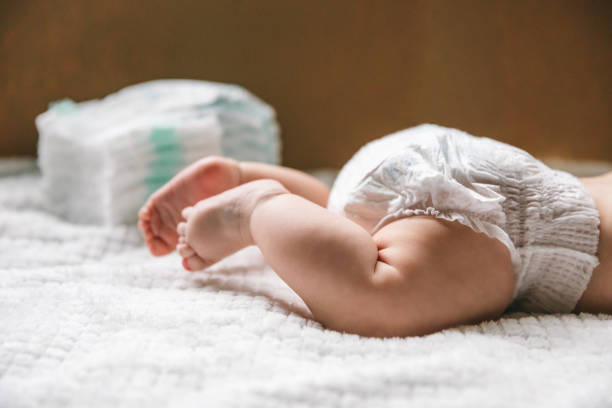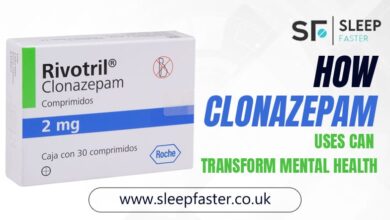
How to Begin Using Newborn Diapers: A Beginner’s Guide
When a new baby is born into a family, along with all the happiness they bring to the home, they also bring many new skills and products that parents and caregivers need to get used to. For example, the art of massaging, changing diapers, bathing the baby, and many other things you might not have ever done earlier will become a habit. Learning to adjust and change newborn diapers is one such skill you would need to master soon in your life. This article will explore issues such as why use newborn diapers, choosing the best newborn diapers for your little one, when to stop using newborn diapers and the best newborn diapers option for your baby.
Table of Contents
Benefits Of Using Newborn Diapers
Let us begin with understanding why your newborn baby needs cloth diapers. This is the introductory chapter of any new parents’ beginner’s book! As soon as your baby is born, they start to poop and pee and need newborn diapers. Let us understand the reasons why you should be using cloth, reusable, washable and sustainable newborn diapers as against disposable diapers:
- Newborn diapers made of cloth are free from harmful chemicals and toxins. In addition, they are made to fit a newborn baby’s bum. Thus, your child will have fewer chances of having a diaper rash situation.
- Newborn babies sleep more extended hours and rest for almost 16 hours a day. Newborn diapers ensure they do not have to get up every time they pee. In addition, good-quality newborn diapers are absorbent and can soak up to several pees while the baby sleeps peacefully.
- Using newborn diapers saves parents’ time that would otherwise go in constantly changing underwear. It also puts the mind of parents and caregivers at ease, knowing that the baby is sleeping peacefully without any dampness causing harm to their skin or interruptions in their sleep.
How To Choose Best Newborn Diapers
Here are some tips to help you choose the best-suited newborn diapers and brands for your little one.
- Plastic or synthetic material can be harsh on your baby’s sensitive and delicate skin. Best newborn diapers are the ones that are made of sustainable and skin-friendly fabric. Organic cotton, hemp, wool and other natural, sustainable materials are the best newborn diapers for your baby’s skin.
- If the cloth of your baby’s diaper is printed using a substandard or low-quality dye, that can also cause irritation, redness and rash to your baby’s skin. Some brands, such as SuperBottoms, use only GOTS certified organic cotton and AZO-free dyes for their products for your baby’s skin.
- Although there are no regulations regarding diapers in our country, there are brands and products available that take an extra step and get their products certified to be safe for kids. For example, some cloth diapers brands are CPSIA certified, which means their diapers are free of Phthalates and other harmful chemicals.
- A product is important, but when it comes to products that need a learning curve to master to fit and wear, after sale support is equally important. So, while choosing a brand for newborn diapers, consider if they have a customer connect team available to help you, give you demos and connect you with others who have had a successful exclusive cloth diapering journey to learn from.
How To Wash Newborn Diapers
- First Wash – As the newborn diapers are directly in contact with your baby’s skin, it is essential to prepare and wash them before you use them. The first wash is as simple as cleaning any other baby apparel. Just follow the simple rules of washing cloth diapers, such as not using an antiseptic liquid, fabric softener or liquid detergents. And this will ensure that your diapers are as good as new for a long time!
- Washing Using A Washing Machine – Cloth diapers can be washed just like any other apparel in the washing machine. There is just one additional step before you toss them into a washing machine. If your baby pooped in the diaper, use a washroom faucet or jet spray to knock the poop off in the commode, and then rinse the diaper with water till the residue or pee and poop is rinsed off. You can use cloth diaper sheet detergent formulated specially to wash cloth diapers to wash your newborn diapers.
- Hand Washing Newborn Diapers – As mentioned above, knock the poop off and rinse the diaper before soaking it. Ensure that you do not use a brush or wooden bat to wash the diapers by hand. A simple soak and hand wash routine are enough to clean the cloth diapers well. Do not wring the diapers too tight, as that might change the shape of the diaper’s fabric.
When To Move To Free Size Diaper From Newborn Diapers
Newborn diapers fit only up to a certain weight and size; thus, it is also essential to know when to graduate to a free size diaper. The brand would give you an upper weight limit to which the newborn diapers would fit. But sometimes, with leaner babies, they fit a bit longer. Newborn diapers ideally fit up to 6 – 7 months babies. The following are a few indicators that it is time to buy a new stash and get your free size diapers.
- Your baby can pull the Velcro apart and open the diaper on its own.
- You cannot put the diaper on properly or find it difficult to fasten the Velcro.
- The Velcro snaps open on its own.
- The diaper leaves elastic marks on the waist or the thighs.
- The diaper is not covering the bum wholly and correctly.
- There is a recurring leakage issue.
- Your baby seems uncomfortable in the current size.
As a new parent, choosing the right size and kind of diaper is one of your most important decisions. In the longer run, cloth diapers are cheaper than disposable diapers, but they are a one-time investment. Thus, consider all factors before deciding. Then, make a conscious and aware decision that is good for your baby, you and the environment. Happy parenting! Happy diapering!








